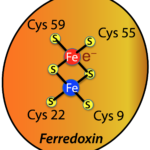Numerous Biosciences Area personnel are among the 2021 Berkeley Lab Director’s Awards honorees. This annual program recognizes outstanding contributions by employees to all facets of Lab activities. A complete list of winners can be found here. The 10th annual Director’s Awards ceremony will take place on November 18 at noon.
New Refinement Technique Promises Greater Protein Structure Accuracy
X-ray free-electron lasers (XFELs) came into use in 2010 for protein crystallography, allowing scientists to study fully hydrated specimens at room temperature without radiation damage. Researchers have developed many new experimental and computational techniques to optimize the technology and draw the most accurate picture of proteins from crystals. Now scientists in the Molecular Biophysics and Integrated Bioimaging (MBIB) Division have developed a new program, diffBragg, which can process every pixel collected from an XFEL for a protein structure independently. In a recent IUCrJ paper, the team led by MBIB Senior Scientist Nicholas Sauter proposed a new processing framework for more accurate determination of protein structures.
How to Reduce Greenhouse Gas? Tips from a Methane-Eating Microbe
Scientists have determined the structure of a unique enzyme, produced by a species of methane-eating bacteria, that converts the greenhouse gas into methanol – a highly versatile liquid fuel and industrial product ingredient.
Their new study, published in the Journal of the American Chemical Society, is the first to report the structure of the enzyme, called soluble methane monooxygenase (sMMO), at room temperature in both its reduced and oxidized forms. This detailed structural information will help researchers design efficient catalysts for industrial methane to methanol conversion processes.
Showtime for Photosynthesis
An international team led by researchers in Berkeley Lab’s Molecular Biophysics and Integrated Bioimaging (MBIB) Division has revealed a key step in the molecular mechanism behind the water splitting reaction of photosynthesis. The finding could help inform the design of renewable energy technology.
Gaining New Insights into Metal Electron Shuttling from XFELs
Metalloenzymes play an important role in biological systems, including physiology, agriculture, and photosynthesis. Understanding the fundamental chemical mechanism of enzymes is critical for optimizing the biochemical pathways for many aspects of life. In a paper published in Acta Crystallographica Section D, scientists in the Molecular Biophysics and Integrated Bioimaging (MBIB) Division present new computational methods that will enable metalloprotein studies at X-ray Free Electron Laser (XFEL) light sources.
Was this page useful?







